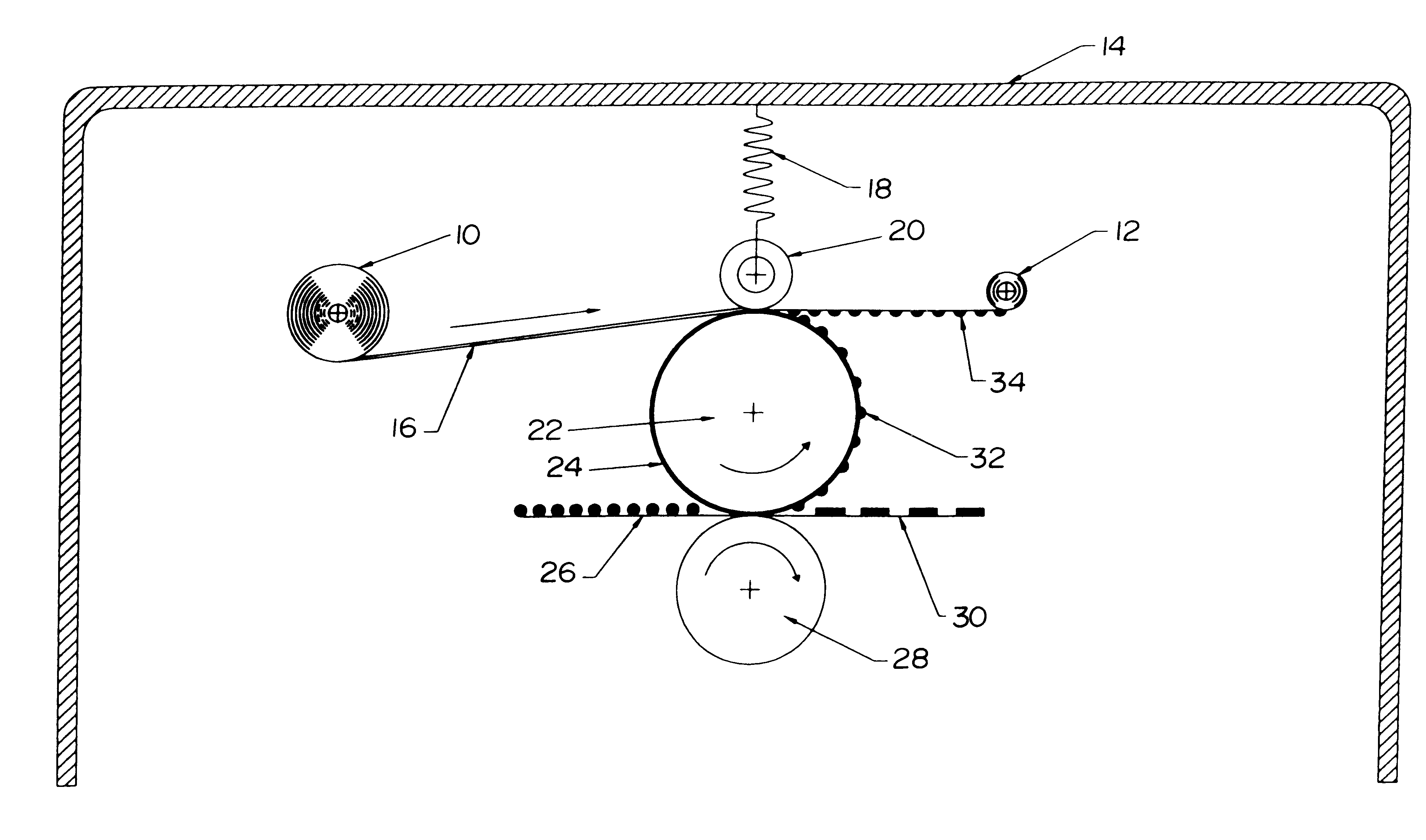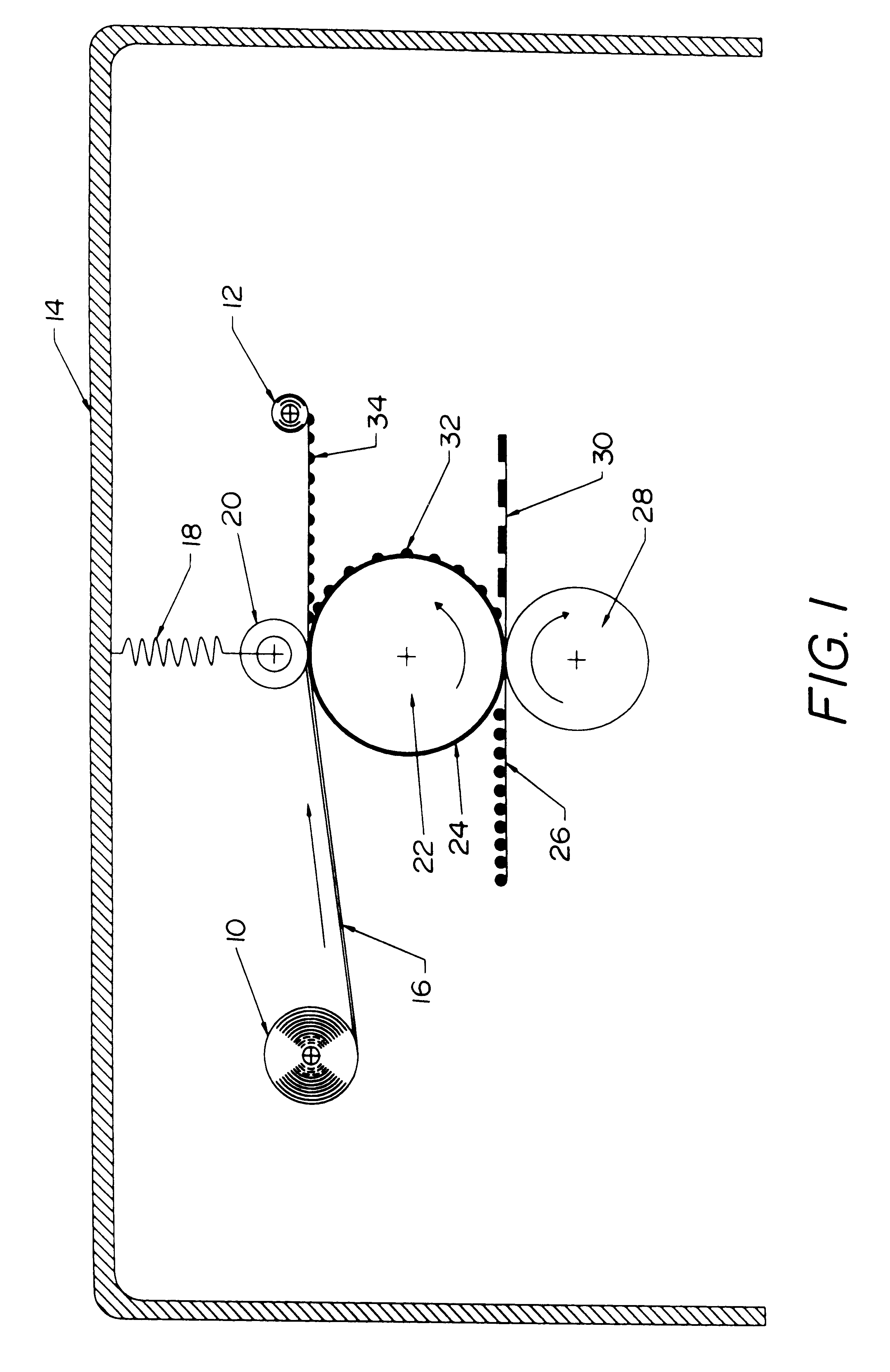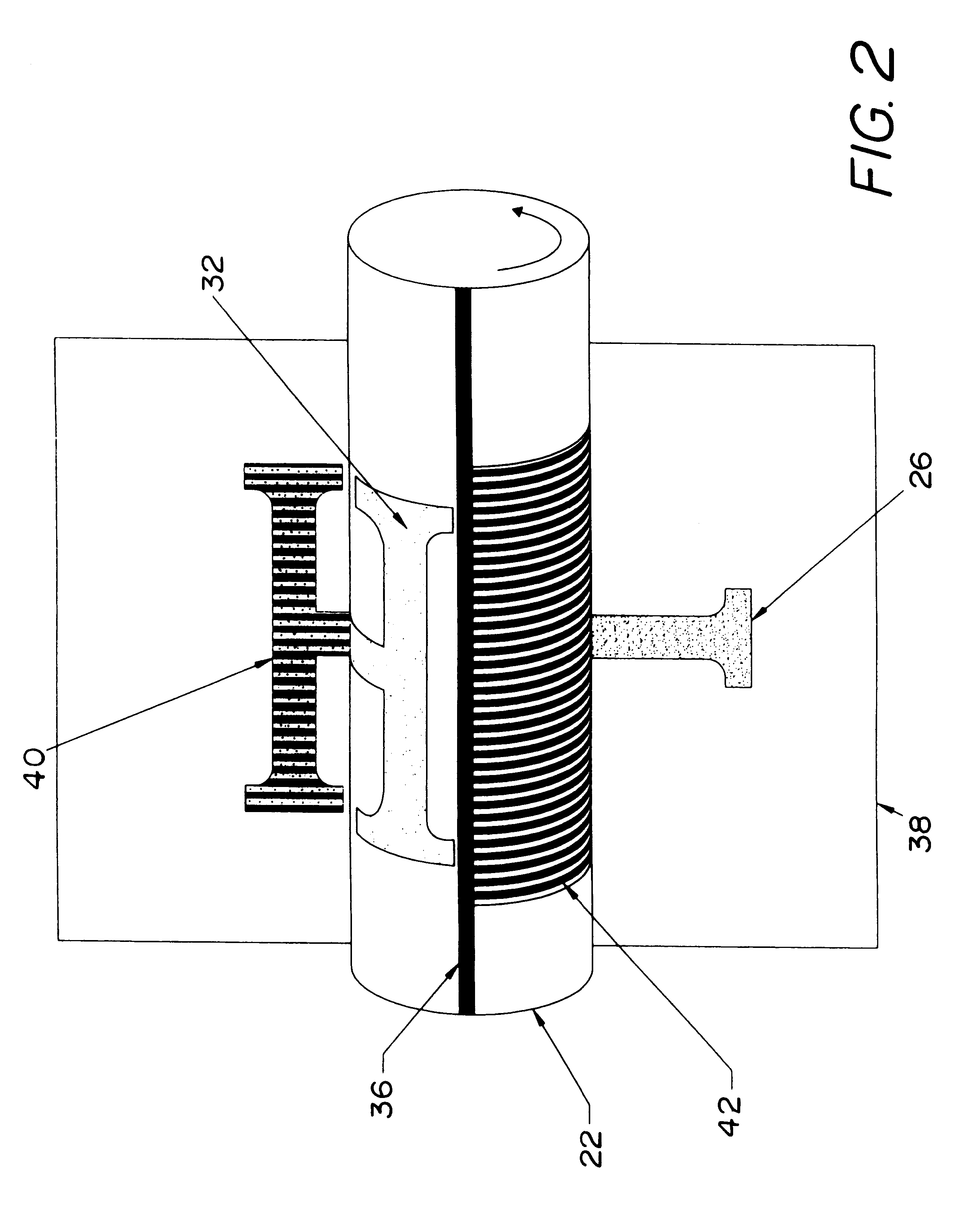Release agent delivery system for use in printer devices
a technology of printer devices and release agents, which is applied in the direction of electrographic process devices, instruments, optics, etc., can solve the problems of low sharpness and quality of immediate printing, unsatisfactory printing page non-uniformity, and certain image or print quality issues with presently used textile materials, so as to improve the uniformity of release agents and reduce non-uniform printing pages. , the effect of finer topographical surfaces
- Summary
- Abstract
- Description
- Claims
- Application Information
AI Technical Summary
Benefits of technology
Problems solved by technology
Method used
Image
Examples
Embodiment Construction
1) A thermal bonded textile was manufactured using 80% 0.7 denier Polyester fiber and 20% 0.8 denier Aramid fiber. The web was manufactured to an area weight of 24 grams / square meter with a thickness of 0.063 mm. The material was then slit to a width of 222 mm The dry slit web was then impregnated with 17 grams / square meter of 1000 Centistoke viscosity silicone oil as manufactured by Dow Corning under the brand name 200 fluid. The impregnated web was then wound onto a metal shaft to a length of 12.34 meters, forming what is known as the supply spool. Another metal shaft was attached to the loose end of the web using pressure sensitive adhesive, forming what is known as the take-up shaft end. Both metal shafts were then inserted into a Tektronix Model Phaser 560 web cartridge and placed into a Model Phaser 560 printer.
To determine the micro-uniformity of oil laydown produced on a electrophotographic print, one common methodology is known as toner dust testing. The toner dust testing ...
PUM
 Login to View More
Login to View More Abstract
Description
Claims
Application Information
 Login to View More
Login to View More - R&D
- Intellectual Property
- Life Sciences
- Materials
- Tech Scout
- Unparalleled Data Quality
- Higher Quality Content
- 60% Fewer Hallucinations
Browse by: Latest US Patents, China's latest patents, Technical Efficacy Thesaurus, Application Domain, Technology Topic, Popular Technical Reports.
© 2025 PatSnap. All rights reserved.Legal|Privacy policy|Modern Slavery Act Transparency Statement|Sitemap|About US| Contact US: help@patsnap.com



